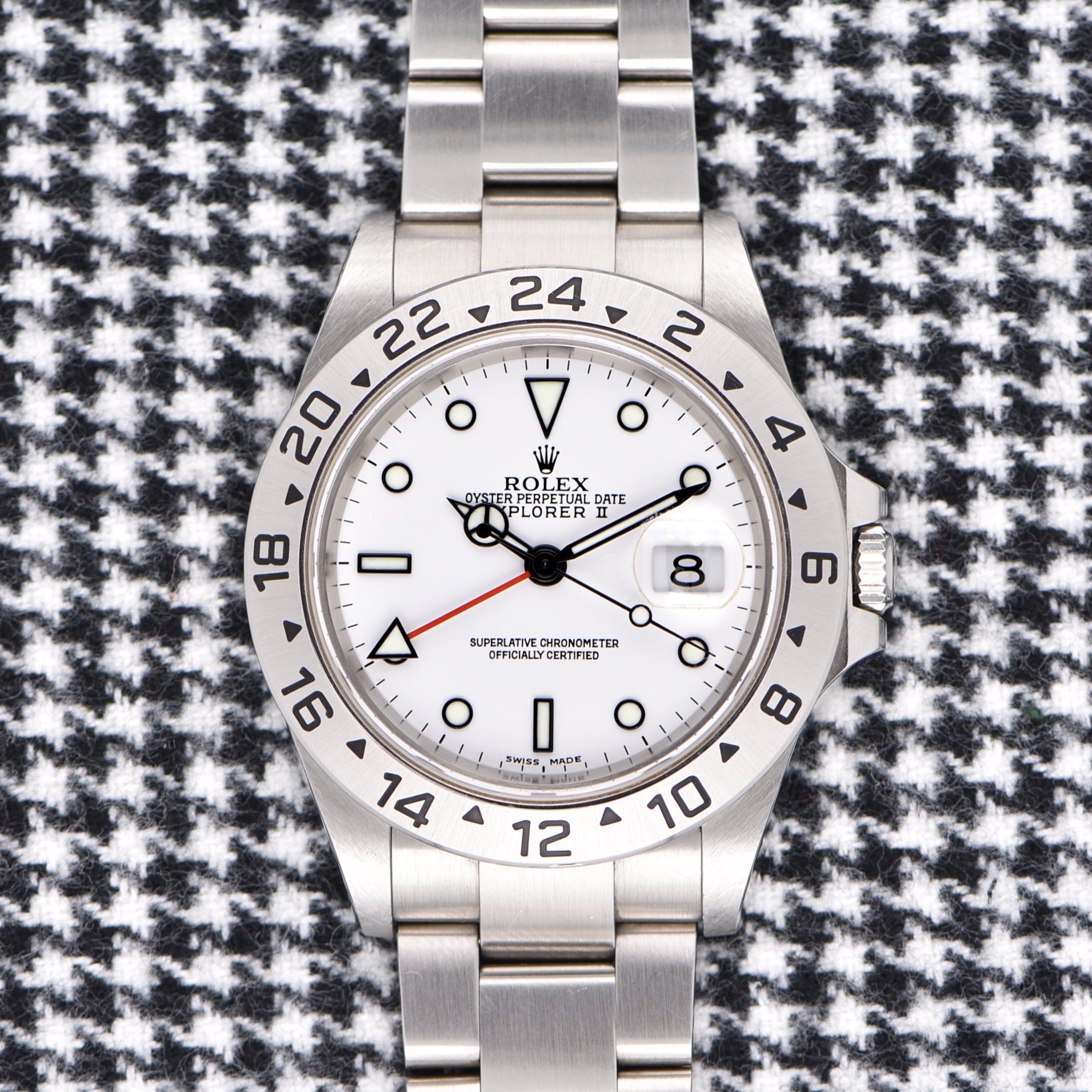
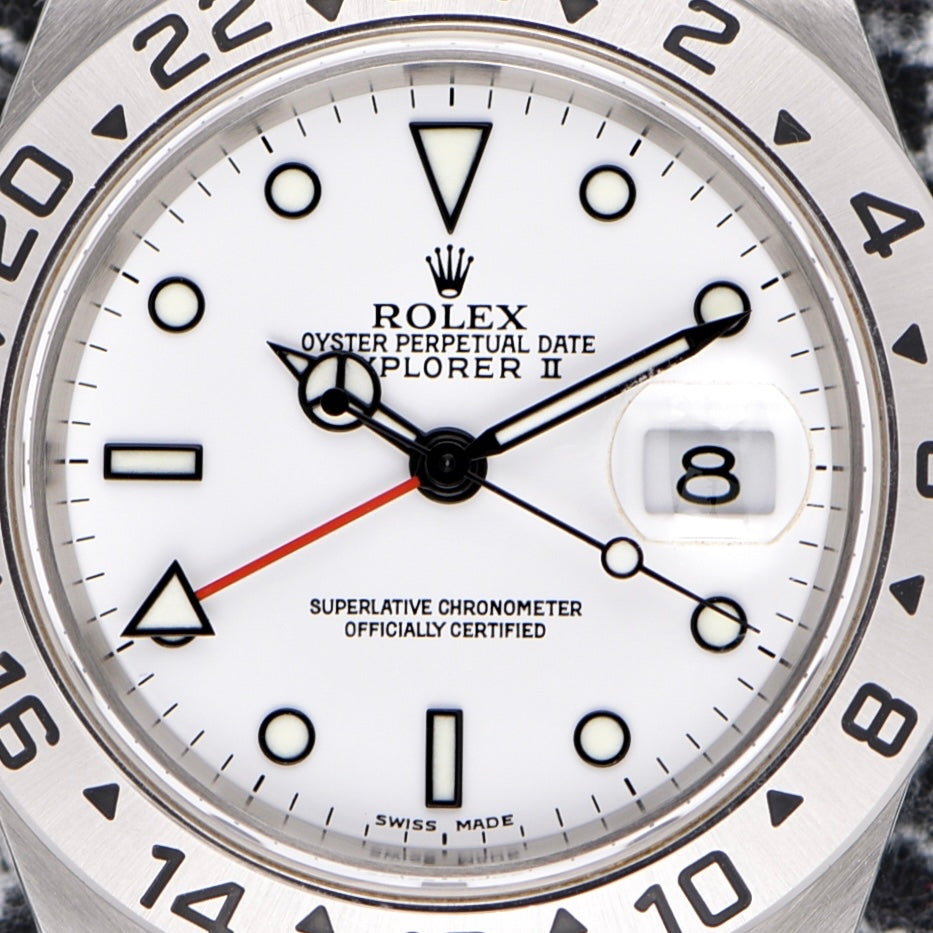
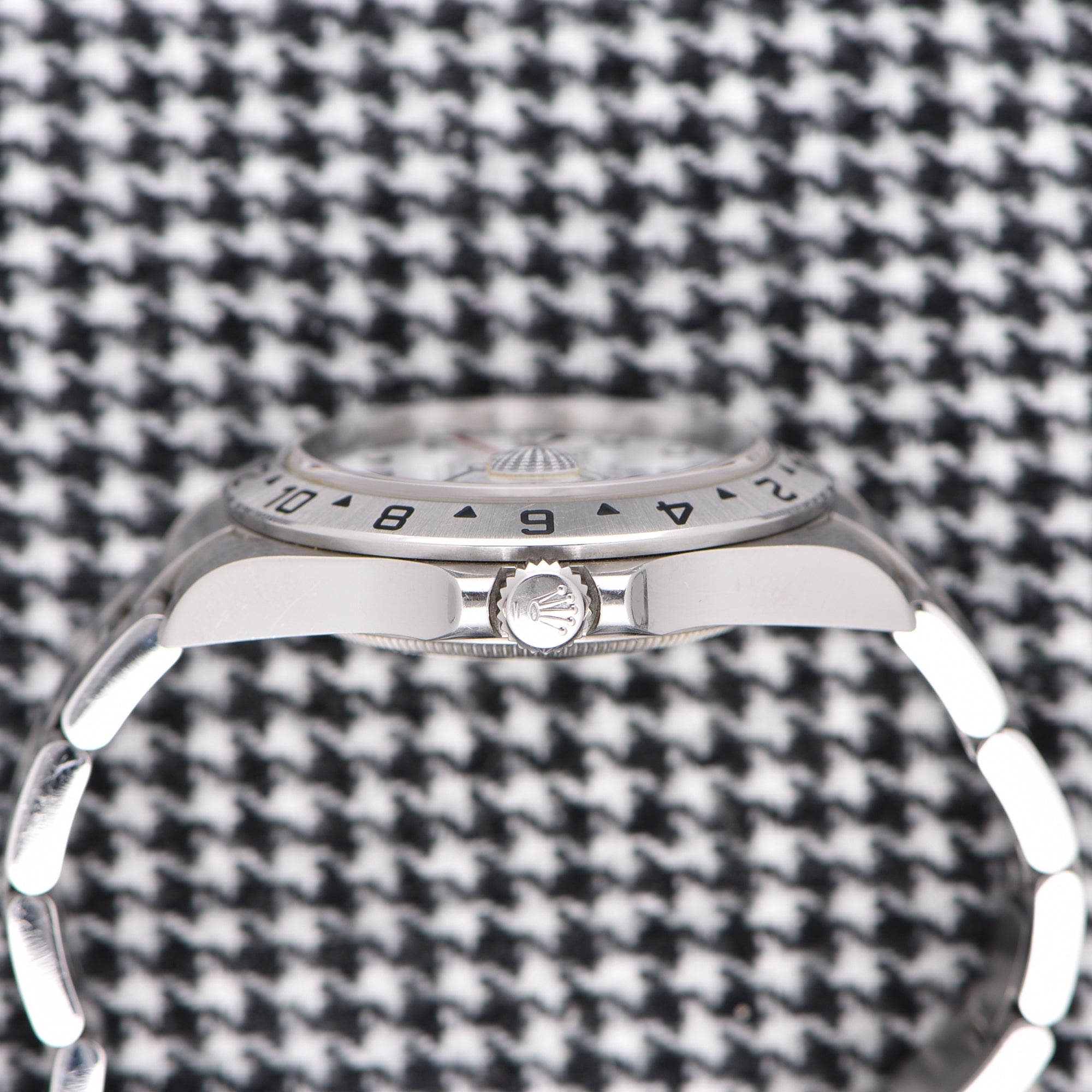
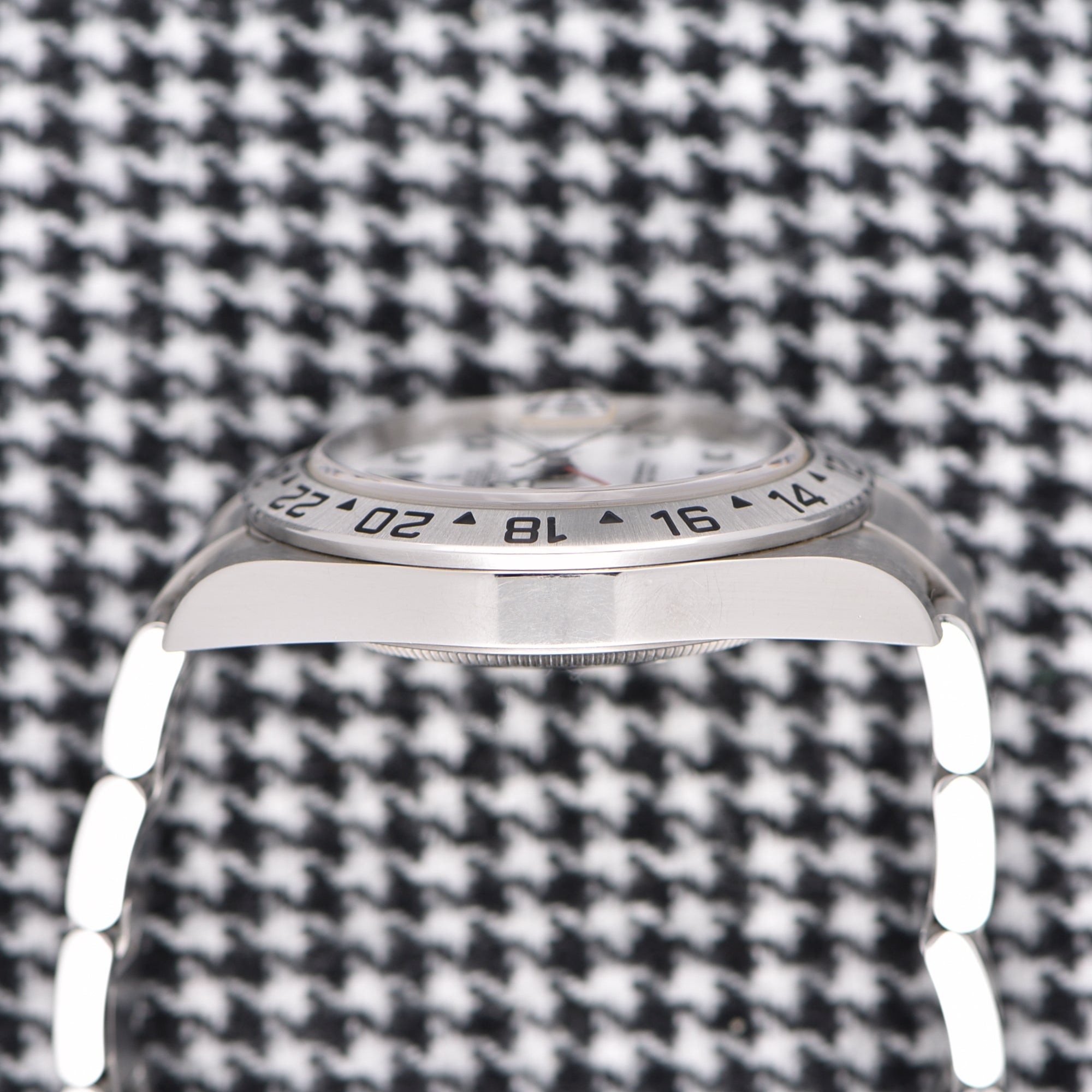

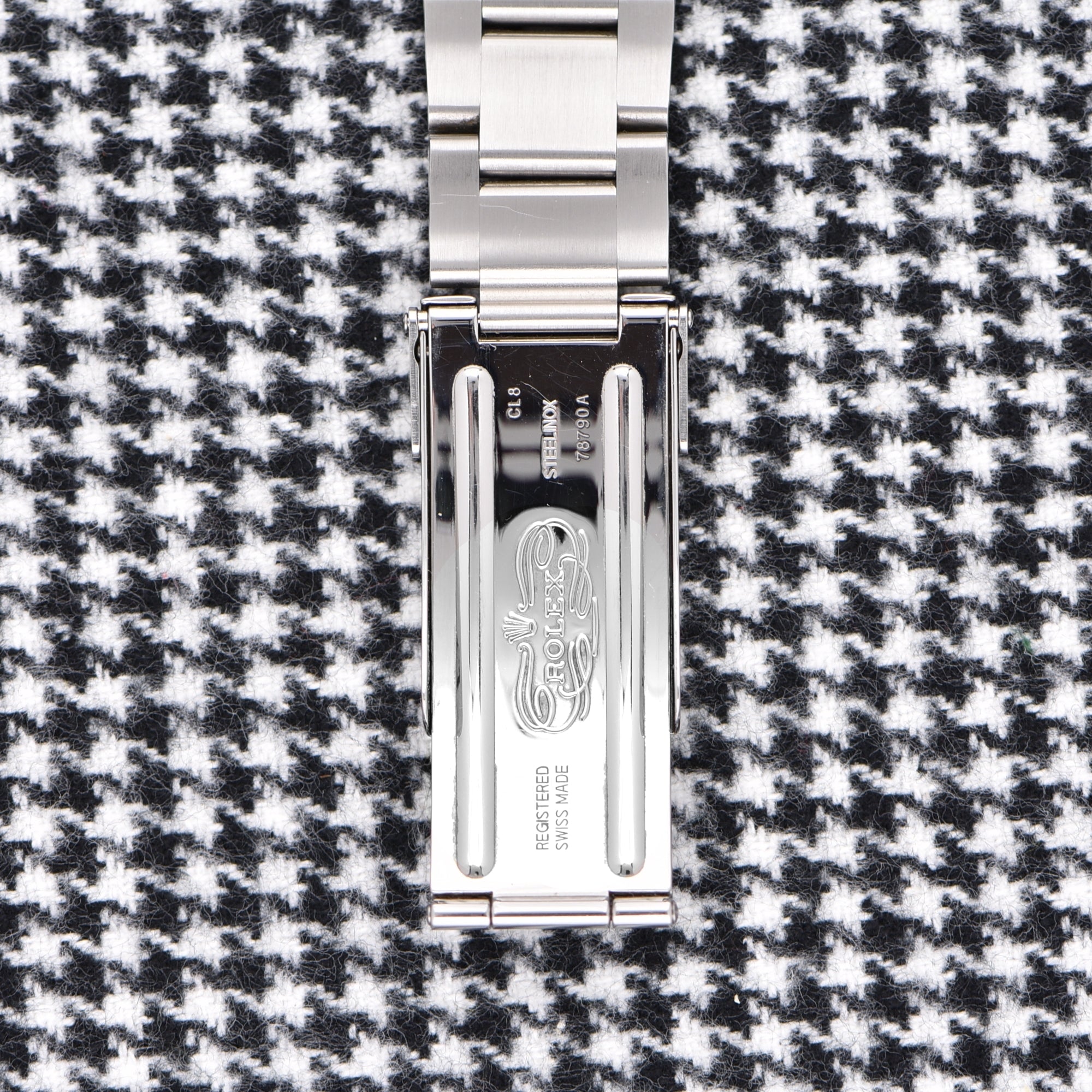
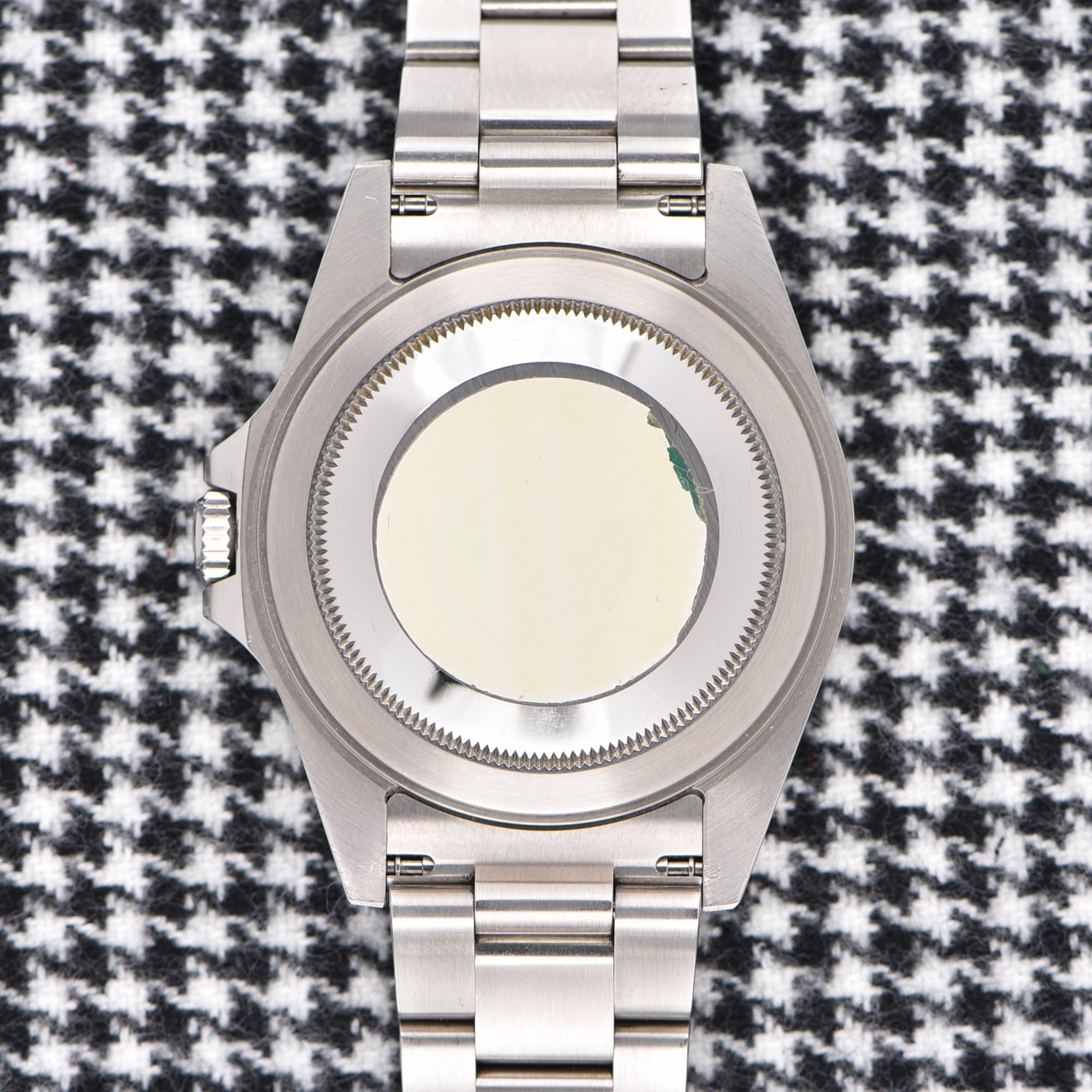
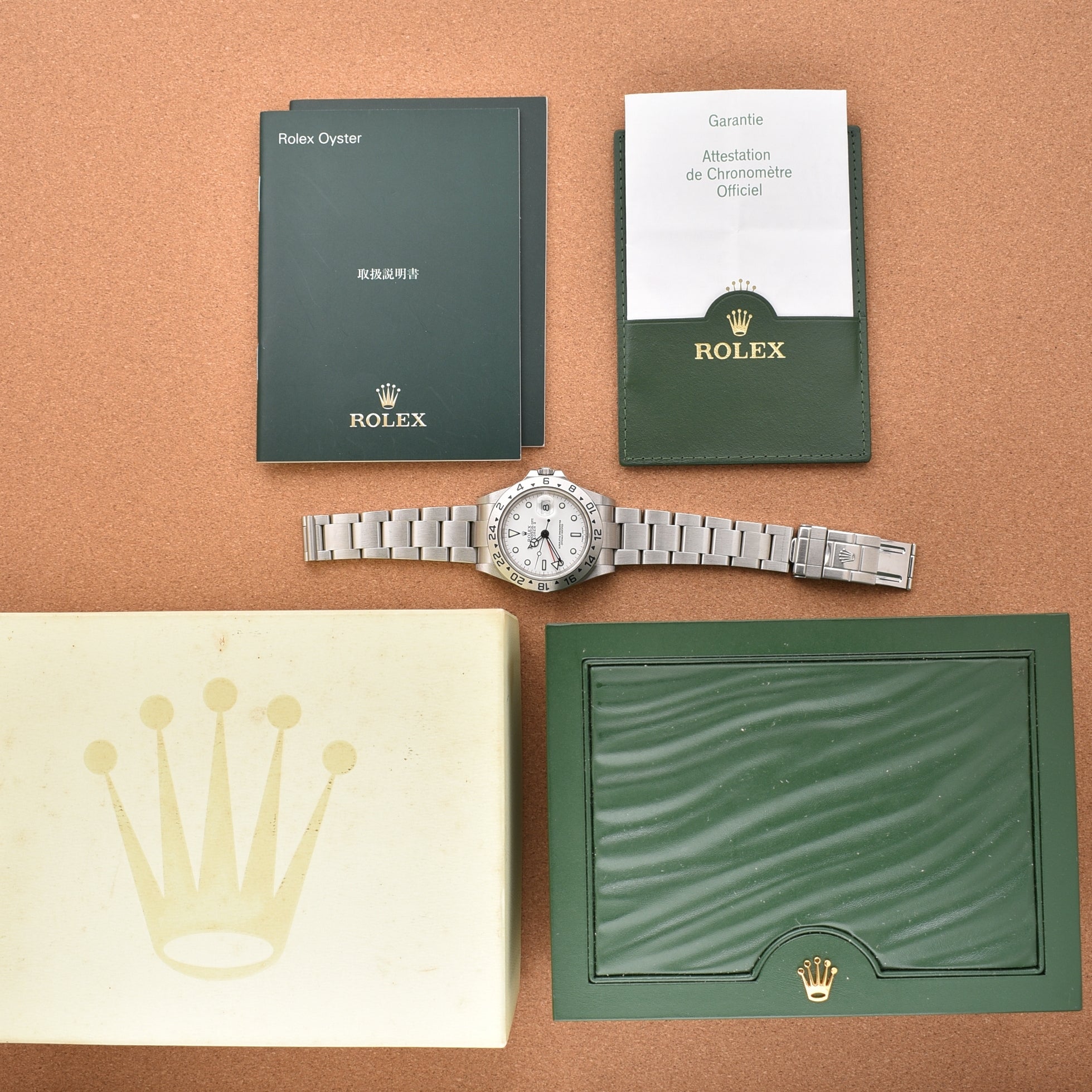

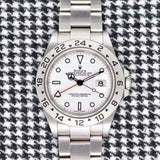
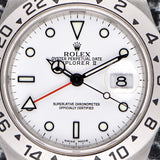
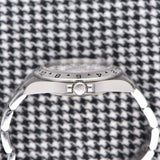
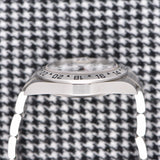
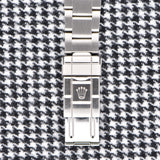

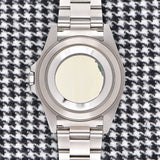
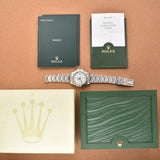
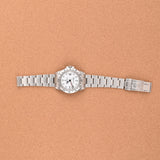
2005 Rolex Explorer 2 Polar Dial - Box & Papers
- Reference 16570
- Box, booklets, booklet holder, certificate
- Specifications
- The Story
- The Brand
Year: 2005
Model: Explorer 2
Case Diameter: 39mm
Lug to Lug: 47mm
Case: Stainless Steel
Condition: No significant wear as seen
Dial: White
Movement: Automatic
Condition
The case looks great with sharp champers. The top left lug has one small flea bite. The dial and lume are both perfect and matching. The bracelet is in nice condition with very minimal stretch.
In 1971, Rolex introduced the Explorer II as a larger sibling to the original Explorer I wristwatch. The first reference was the Explorer II ref. 1655, featuring a 39mm stainless steel case and matching steel bracelet. These watches were designed for spelunkers, with key features such as an extra 24-hour hand that points to a fixed bezel with 24-hour markings. The watch was not a dual-time timepiece, but later changed to become a dual-time timepiece.
Transitional references, such as the Explorer II ref. 16550, introduced features of preceding versions along with additional modifications that pave the way for future references. The 1985 model introduced the larger 40mm case size, sapphire crystal, and Caliber 3085, revamping the dial to look similar to other sports models with Mercedes-style hands and the combo of triangular, round, and rectangular lume-filled hour markers.
In 1989, Rolex unveiled the ref. 16570, which had many of the same features as the preceding ref. 16550 with notable upgrades. The ref. 16570 was made for 22 years and underwent several changes over its production run. Early models ran on Caliber 3185, later models housed Caliber 3186, and the luminescent material changed several times. Rolex began engraving the rehaut (space between the dial and the crystal) with "ROLEX" starting in the mid-2000s as an anti-counterfeiting measure. Later examples of the Explorer II ref. 16570 are notably different from early examples of the same model.
The example for sale is an F serial meaning it could be from 2003-2005, the papers are stamped 2006 so it is most likely a later F serial. The watch features a no-holes case meaning the spring bar holes on the lugs aren't seen and it has sold end links. The watch also comes with its original box and papers.
Wilsdorf & Davis was initially a watch importer, but by 1908, Wilsdorf had registered 'Rolex' as a trademark. The name was chosen after trial and error, with some believing it was taken from the phrase 'horological Excellence' or because the word sounds like a watch being wound. Wilsdorf was aware of the power of branding and began a long campaign to get the new company name on the watches he exported. The relationship between Rolex and Aegler started the same year that Wilsdorf & Davis set up the business, placing the largest order for wristwatches ever seen. Wilsdorf was attracted by Aegler's commitment to the highest quality, as their movements were extremely accurate and small. In 1910, one of Rolex's models won a First Class Chronometer Certificate from the rating office in Bienne, Switzerland, and in 1914, another piece became the first ever wristwatch to be granted a Class A Chronometer Certificate from the Kew Observatory in England, the only non-marine timepiece to ever achieve it. The firm of Wilsdorf & Davis became synonymous with a commitment to uncompromising excellence.
WWI in 1914 led to the rebranding of Wilsdorf & Davis as Rolex in 1915. The British government imposed a 33.3% tax on luxury goods, forcing Rolex to relocate to Bienne. Despite the war, the wristwatch proved its utility, as it was used by soldiers during combat and in the field. Rolex produced trench watches, using Aegler's small movements for wearability. By the end of the war, wristwatches became a utilitarian accessory for men. In the years between the wars, Rolex asserted its independence, partnering with Carl F. Bucherer to resist the Federation of Swiss Watch Manufacturers. In 1926, Rolex introduced the Oyster case, making wristwatches waterproof, dustproof, and robust. Wilsdorf capitalized on this innovation by installing Rolex Ambassadors, or 'Testimonies', with celebrities as a marketing masterstroke.
During WWII, Switzerland retained its neutrality, meaning that it was one of the few countries not forced to shut down watch manufacturing to supply the war effort. As a result, by the end of hostilities, the Swiss watch industry was way ahead of other nations. Rolex truly came of age in the 1950s by launching some of the most enduring legends in watchmaking, such as the Explorer, Submariner, GMT-Master, Day-Date, and Milgauss.
The quartz crisis of the 1970s and 80s forced the company to change tactics but ultimately repositioned itself as the purveyor of the ultimate luxury lifestyle. Today, the name Rolex is synonymous with refinement, opulence, and personal accomplishment. The Rolex brand as we know it today is the byproduct of an unrelenting drive for excellence and over a hundred years of refinement and development, all in pursuit of the brand’s singular goal of making the world’s best wristwatch.
2005 Rolex Explorer 2 Polar Dial - Box & Papers
Authenticity Guaranteed
All our watches are carefully inspected to insure and guarantee the authenticity.
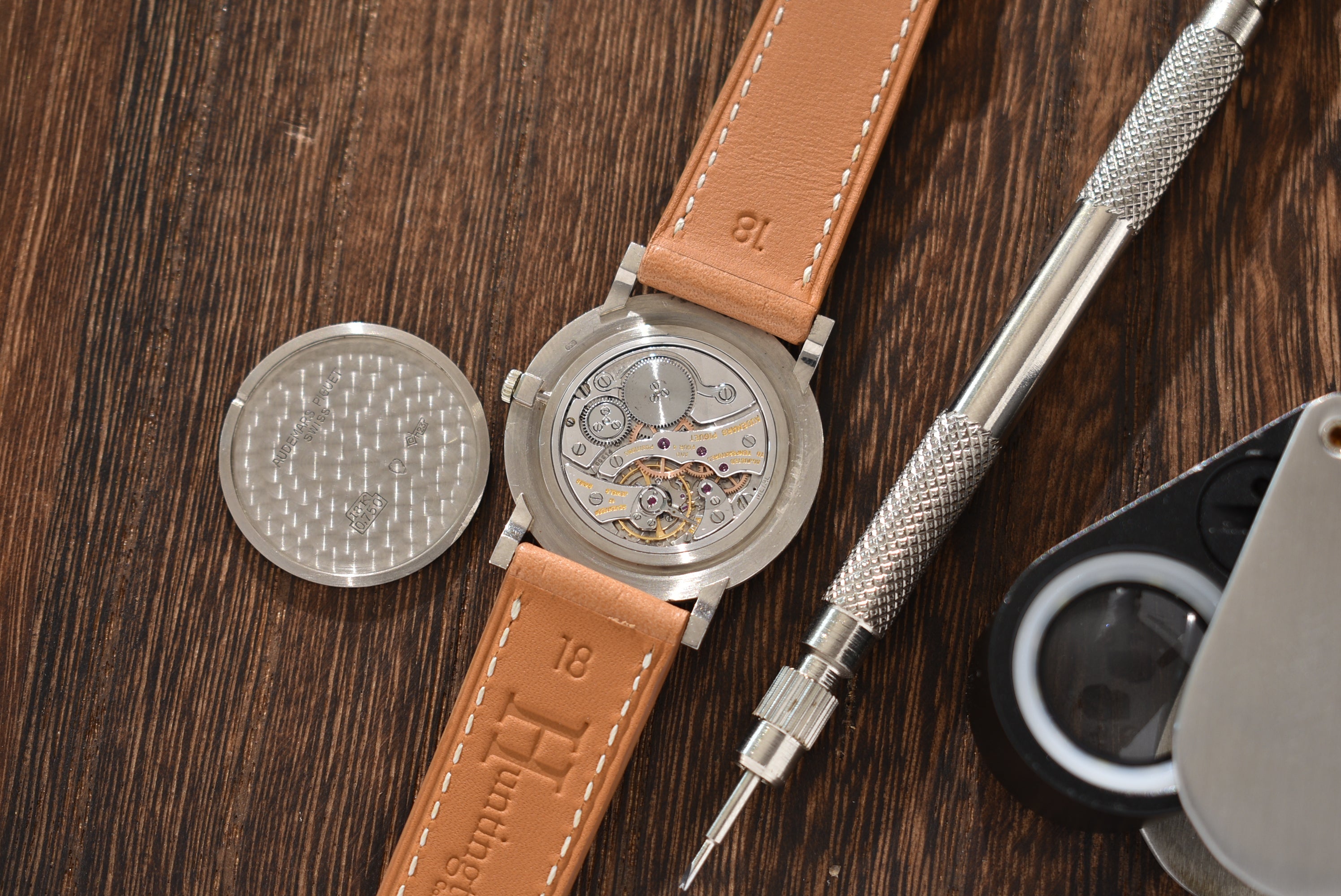
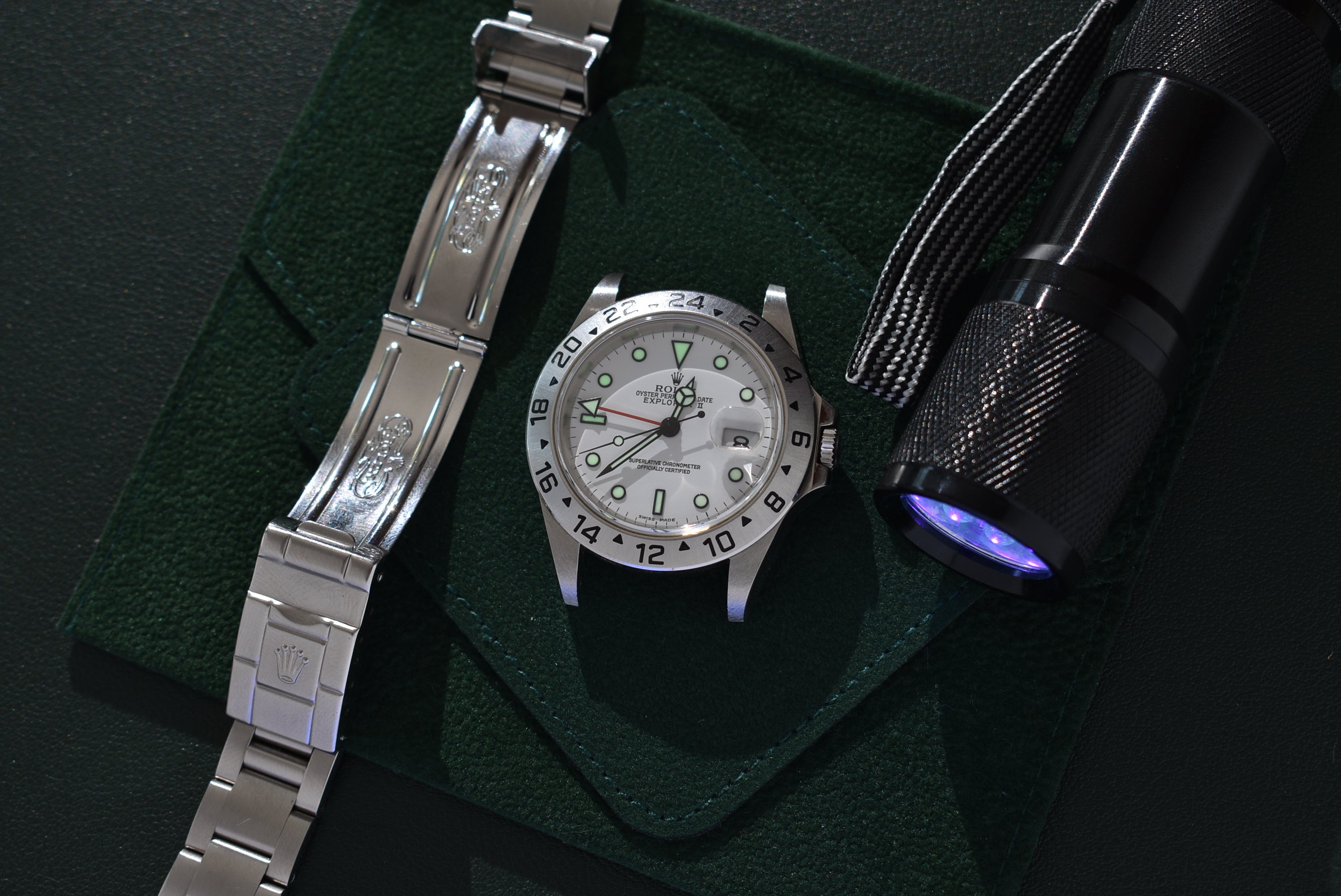
The Details
All our watches are scrutinized during inspection to make sure our descriptions are as accurate as possible.
- Related products
- Recently viewed
